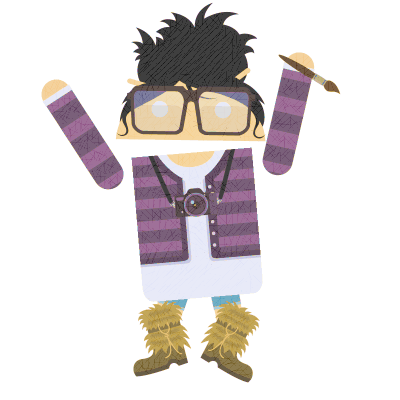Path
To draw any path(s) on canvas
- turned_in_notPath Related Methods
moveTo()lineTo()beginPath()closePath()clip()isPointInPath()isPointInStroke()
moveTo( )
Used to create a starting point to begin in the canvas (It's like putting your pencil dot anywhere on a white paper to start something new)
Syntax
ctx.moveTo(x, y)var canvas = document.getElementById("canvas");
var ctx = canvas.getContext("2d");
ctx.moveTo(10,20);
ctx.lineTo(180,50);
ctx.stroke();
<!DOCTYPE html>
<html>
<head>
<title>Full Code</title>
</head>
<body>
<canvas id="canvas" width="200" height="100" style="border:1px solid teal;"></canvas>
<script>
var canvas = document.getElementById("canvas");
var ctx = canvas.getContext("2d");
ctx.moveTo(10,20);
ctx.lineTo(180,50);
ctx.stroke();
</script>
</body>
</html>lineTo( )
Used to add a new point, and defines a line to that point from the last specified point in the canvas, to draw it on canvas, you have to use additional method stroke()
Syntax
ctx.lineTo(x, y)var canvas = document.getElementById("canvas");
var ctx = canvas.getContext("2d");
ctx.moveTo(0,0);
ctx.lineTo(50,50);
ctx.lineTo(180,50);
ctx.stroke();
<!DOCTYPE html>
<html>
<head>
<title>Full Code</title>
</head>
<body>
<canvas id="canvas" width="200" height="100" style="border:1px solid teal;"></canvas>
<script>
var canvas = document.getElementById("canvas");
var ctx = canvas.getContext("2d");
ctx.moveTo(0,0);
ctx.lineTo(50,50);
ctx.lineTo(180,50);
ctx.stroke();
</script>
</body>
</html>beginPath( )
Used to reset current defined path & start to define new fresh path to draw
In simple words it will reset the stroke() & fill() methods to draw last defined paths or shapes declared before beginPath() method
- So, you must use this method before you are defining new shapes or paths
Syntax
ctx.beginPath()var canvas = document.getElementById("canvas");
var ctx = canvas.getContext("2d");
ctx.strokeStyle="blue";
ctx.moveTo(30,30);ctx.lineTo(100,30);ctx.stroke();
ctx.beginPath();
ctx.strokeStyle="red";
ctx.moveTo(30,50);ctx.lineTo(100,50);ctx.stroke();
<!DOCTYPE html>
<html>
<head>
<title>Full Code</title>
</head>
<body>
<canvas id="canvas" width="200" height="100" style="border:1px solid teal;"></canvas>
<script>
var canvas = document.getElementById("canvas");
var ctx = canvas.getContext("2d");
ctx.strokeStyle="blue";
ctx.moveTo(30,30);ctx.lineTo(100,30);ctx.stroke();
ctx.beginPath();
ctx.strokeStyle="red";
ctx.moveTo(30,50);ctx.lineTo(100,50);ctx.stroke();
</script>
</body>
</html>closePath( )
Used to close the current path, it will join the start & end points of the current path with a straight line
Syntax
ctx.closePath()- Must be declared before the
stroke() or fill() - Used to close the open paths
var canvas = document.getElementById("canvas");
var ctx = canvas.getContext("2d");
ctx.arc(80,50,25,0,1.5*Math.PI);
ctx.closePath();
ctx.stroke();
<!DOCTYPE html>
<html>
<head>
<title>Full Code</title>
</head>
<body>
<canvas id="canvas" width="200" height="100" style="border:1px solid teal;"></canvas>
<script>
var canvas = document.getElementById("canvas");
var ctx = canvas.getContext("2d");
ctx.arc(80,50,25,0,1.5*Math.PI);
ctx.closePath();
ctx.stroke();
</script>
</body>
</html>clip( )
Used to show the path or shape area portion (declared after clip) only which are inside the clipped region
- only works with clipped area declared using defined shape/path methods
Syntax
ctx.clip()var canvas = document.getElementById("canvas");
var ctx = canvas.getContext("2d");
ctx.rect(20,20,50,50);ctx.stroke();
ctx.clip();
ctx.beginPath();
ctx.arc(60,50,25,0,1.25*Math.PI);
ctx.closePath();
ctx.stroke();
<!DOCTYPE html>
<html>
<head>
<title>Full Code</title>
</head>
<body>
<canvas id="canvas" width="200" height="100" style="border:1px solid teal;"></canvas>
<script>
var canvas = document.getElementById("canvas");
var ctx = canvas.getContext("2d");
ctx.rect(20,20,50,50);ctx.stroke();
ctx.clip();
ctx.beginPath();
ctx.arc(60,50,25,0,1.25*Math.PI);
ctx.closePath();
ctx.stroke();
</script>
</body>
</html>isPointInPath( )
Used to check whether the specified point lies within the area covered by the defined paths/shapes or not
Syntax
ctx.isPointInPath(x, y)var canvas = document.getElementById("canvas");
var ctx = canvas.getContext("2d");
ctx.rect(20,20,100,50);ctx.stroke();
if(ctx.isPointInPath(25,25)){
ctx.fillText("true",25,25);
}
<!DOCTYPE html>
<html>
<head>
<title>Full Code</title>
</head>
<body>
<canvas id="canvas" width="200" height="100" style="border:1px solid teal;"></canvas>
<script>
var canvas = document.getElementById("canvas");
var ctx = canvas.getContext("2d");
ctx.rect(20,20,100,50);ctx.stroke();
if(ctx.isPointInPath(25,25)){
ctx.fillText("true",25,25);
}
</script>
</body>
</html>isPointInStroke( )
Used to check whether the specified point lies within the area of the current defined path's stroke or not
Syntax
ctx.isPointInStroke(x, y)var canvas = document.getElementById("canvas");
var ctx = canvas.getContext("2d");
ctx.rect(20,20,100,50);ctx.stroke();
if(ctx.isPointInStroke(20,20)){
ctx.fillText("true",20,20);
}
<!DOCTYPE html>
<html>
<head>
<title>Full Code</title>
</head>
<body>
<canvas id="canvas" width="200" height="100" style="border:1px solid teal;"></canvas>
<script>
var canvas = document.getElementById("canvas");
var ctx = canvas.getContext("2d");
ctx.rect(20,20,100,50);ctx.stroke();
if(ctx.isPointInStroke(20,20)){
ctx.fillText("true",20,20);
}
</script>
</body>
</html>






 So,
So,